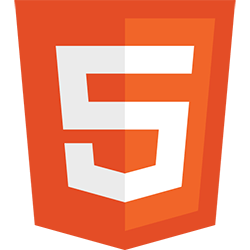Prepend and Append Files with .htaccess
One of the lessor known and used capabilities of .htaccess files is the ability to prepend and append includes to every page request. Doing so avoids needing to code <?php require('footer.php'); ?> in every template file you wat to use them in. Here's the .htaccess code:
# Prepend the file
php_value auto_prepend_file "/dir/path/utilities.php"
# Append file to bottom of page
php_value auto_append_file "/dir/path/templates/footer.php"
Now don't mistake this post as me telling you to use this strategy; using this functionality creates a layer of indirection that could confuse a team of developers if they don't all have a grasp of where automatically included files are coming from. Just wanted to let you know this was possible!
![fetch API]()
One of the worst kept secrets about AJAX on the web is that the underlying API for it, XMLHttpRequest, wasn't really made for what we've been using it for. We've done well to create elegant APIs around XHR but we know we can do better. Our effort to...
![Being a Dev Dad]()
I get asked loads of questions every day but I'm always surprised that they're rarely questions about code or even tech -- many of the questions I get are more about non-dev stuff like what my office is like, what software I use, and oftentimes...
![Create a Simple Slideshow Using MooTools, Part II: Controls and Events]()
Last week we created a very simple MooTools slideshow script. The script was very primitive: no events and no next/previous controls -- just cross-fading between images. This tutorial will take the previous slideshow script a step further by:
Adding "Next" and "Previous" controls.
Adding...
![MooTools TwitterGitter Plugin]()
Everyone loves Twitter. Everyone loves MooTools. That's why everyone should love TwitterGitter, a MooTools plugin that retrieves a user's recent tweets and allows the user to format them however the user would like. TwitterGitter allows the user to choose the number of...





this strategy is often used to hook a profiler into an existing app, which works great in DEV environments
see e.g. http://xhprof.io/
I can see it now, the /html directory full of code snippets, and an incredibly convoluted htaccess file that conditionally assembles the various pages for a site. :)
Quick! Turn it into a framework!
I’ve used to use this technique, but dropped it for a while now.
It appears very useful at first but can be dangerous actually…
One of its weakness is the impossibility to “un” prepend or “un” append according to directory or filematch directives.
How can i use the .httaccess pre-append a .php file? i have tried using—– php_value auto_prepend_file “inc.php”
Am getting this error: Fatal error: Unknown: Failed opening required ‘inc.php” (include_path=’.;D:\xampp\php\PEAR’) in Unknown on line 0
@Matthew
have you tried using full path like /var/www/site/dir/file.php?
.htaccess – is a single file for all project. And I think it’s a bad practice to prepend files, because they will prepend on all pages.
I find it hard to believe @ Pluto htaccess allows if statements.
Thanks Chris, this would be a great way to append a “copyright link” that can’t easily be found.